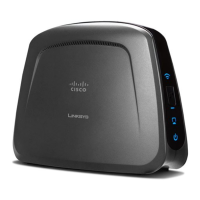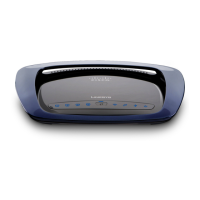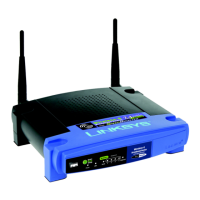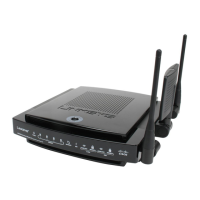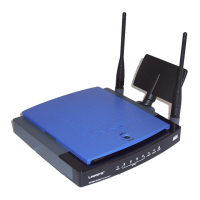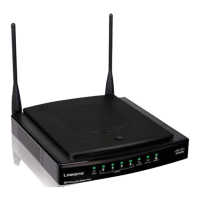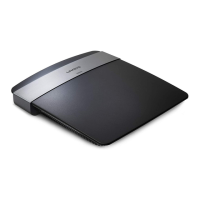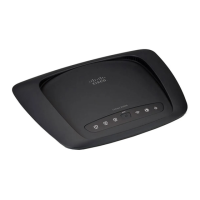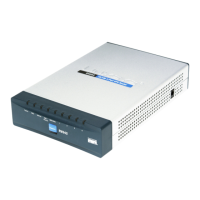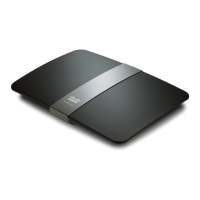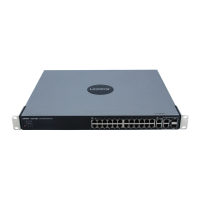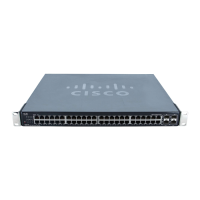26
Appendix B: Wireless Security
What Are the Risks?
Wireless-B Ethernet Bridge
But even WEP has its problems. WEP’s encryption algorithm is referred to as “simple”, which also means
“weak”, because the technology that scrambles the wireless signal isn’t too hard to crack for a persistent
hacker.
There are five common ways that hackers can break into your network and steal your bandwidth as well as your
data. The five attacks are popularly known as:
1. Passive Attacks
2. Jamming Attacks
3. Active Attacks
4. Dictionary-building or Table Attacks
5. Man-in-the-Middle Attacks
Passive Attacks
There's no way to detect a passive attack because the hacker is not breaking into your network. He is simply
listening (eavesdropping, if you will) to the information your network broadcasts. There are applications easily
available on the Internet that can allow a person to listen into your wireless network and the information it
broadcasts. Information such as MAC addresses, IP addresses, usernames, passwords, instant message
conversations, e-mails, account information, and any data transmitted wirelessly, can easily be seen by someone
outside of your network because it is often broadcast in clear text. Simply put, any information transmitted on a
wireless network leaves both the network and individual users vulnerable to attack. All a hacker needs is a
“packet sniffer”, software available on the Internet, along with other freeware or shareware hacking utilities
available on the Internet, to acquire your WEP keys and other network information to defeat security.
Jamming Attacks
Jamming Attacks, when a powerful signal is sent directly into your wireless network, can effectively shut down
your wireless network. This type of attack is not always intentional and can often come about simply due to the
technology. This is especially possible in the 2.4 GHz frequency, where phones, baby monitors, and microwave
ovens can create a great deal of interference and jam transmissions on your wireless network. One way to
resolve this is by moving your wireless devices into the 5 GHz frequency, which is dedicated solely to information
transmissions.

